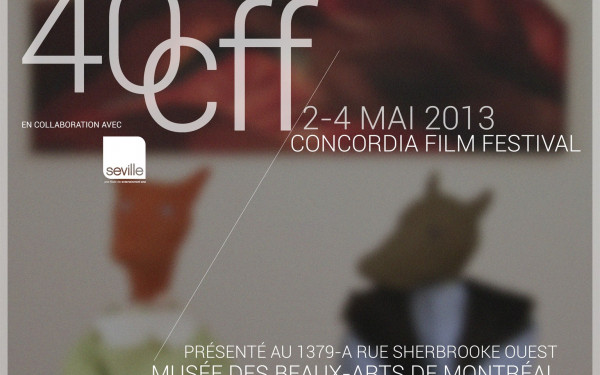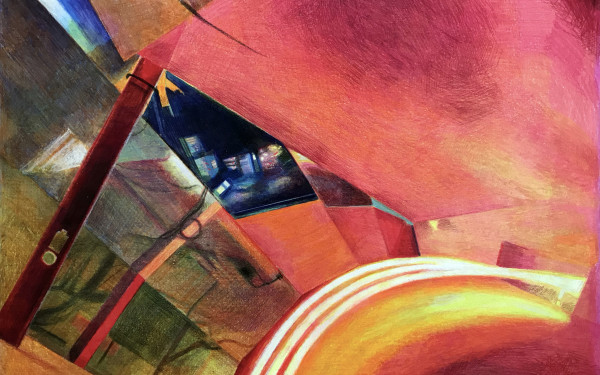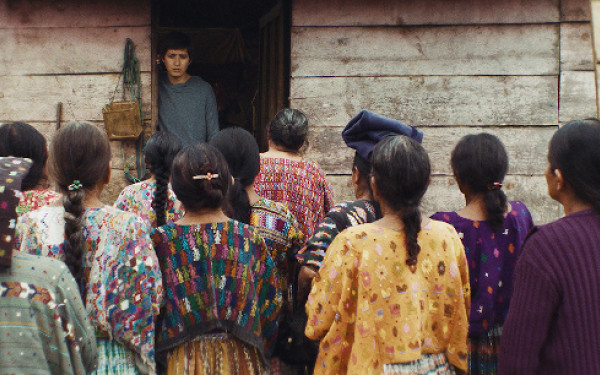Paintings In Motion
Concordia Graduate Student and Film Animator Alisi Telengut Sweeps Up Awards at International Festivals
With multiple awards under her belt, film animation student Alisi Telengut is certainly one of Concordia’s proudest exports.
Her film animations have screened at film festivals in more than 30 cities in over 15 countries in the past year and a half. She just received her eighth award this November at the 24th International Stockholm Film Festival for “Best Short Film” for her recent animated film Tears of Inge.
Her first major award was for “Best Animation Film” in August 2012 at the Montreal World Film Festival for another short, Tengri, which she made for a class at Concordia.
“I was really surprised,” Telengut said of her film’s glowing reception at the acclaimed festival. “I don’t know, I just feel like my technique takes way too long, it takes way too much energy and time.”
Telengut kept her work within the Concordia sphere when she first began her undergraduate career, but quickly entered festival circles as she saw her work being shown at exhibits and screenings elsewhere in Canada.
“[One of my] films was presented at an anthropology conference in Vancouver,” Telengut said. “And I realized, ‘Wow, my films are doing something.’”
Telengut, who hails from Mongolia, arrived in Canada in 2008 and began her studies at Concordia in 2009, with the hope of becoming a painter.
However, the persistence of her parents to pursue a safer career with a more guaranteed income (an all-too-common sentiment of arts students’ parents) landed her in the film animation program, from which she graduated in 2012. She’s now pursuing a Master of Fine Arts in studio arts at Concordia’s Mel Hoppenheim School of Cinema.
Art Grows From the Roots
Telengut’s roots as a painter are still apparent in her animated films, as paint remains the primary medium for her creations.
But other backgrounds come through in Telengut’s films as well—the 24-year-old’s Mongolian culture and ancestry played a vital role in the creation of both Tears of Inge and Tengri, as old Mongolian tales inspired both.
Tears of Inge is based on a Mongolian nomadic story which Telengut’s grandmother, who lived a nomadic lifestyle in the past, told her when she was younger.
In the four-minute film, which Telengut painted frame by frame, she abstractly tells the story of how mother camels reject their babies after giving a painful birth, and how Mongolian nomads sing and play songs to the mother camels to encourage them to accept and take back their babies.
This ritual between camels and nomads is a real occurrence, which Telengut further researched for her piece, adding to her initial knowledge of the practice from her grandmother’s stories.
“When I was younger, when I was a teenager [I heard the stories]. But at the time, I didn’t think it was a big deal,” Telengut said.
Telengut’s grandmother’s voice was featured in Tears of Inge as the narrator, as well as the singer of the ghostly Mongolian song used in the film. Telengut’s grandmother recorded the song, “Oirima,” at a Montreal studio while Telengut was still animating the film.
Another award-winning film of Telengut’s, Tengri, also emulates Mongolian themes. The film is about “wind burial,” an old Mongolian tradition based on shamanism.
The strong wind sounds and intense painting strokes indicating gusts of wind are prominent in both Tengri and Tears of Inge because of the important role wind plays in the life and death of nomadic people.
“Wind in the nomadic life is really strong and it’s associated with nature and their livelihoods. When big storms and winds come, a lot of livestock can die,” Telengut explained.
“So the wind plays an important role in their lives. Since this particular lifestyle is gradually disappearing, I want to record the nomadic traditions with animation as my medium.”
Telengut said she chose the story for Tengri based on impulse rather than research, unlike Tears of Inge.
“One night, I was so tired, it was at the end of second year, and everyone was just talking about projects, projects, projects,” she said. “And I was just sitting there and the idea just came to me. Sometimes art is just something that comes to you.”
Producing Tengri was also a tribute to Telengut’s late grandfather.
“My grandfather passed away when I was pretty young,” she said. “When I was doing the film, it kind of felt like a therapy for me, thinking about my grandfather.”
Telengut said most of her works have one thing in common—an air of sadness.
“I think it’s because I just see the beauty in sad things sometimes,” she said.
In the future, Telengut said she would like to continue making animated films after getting her master’s, and perhaps re-enter the realm of academia, this time as a teacher.
While she has recently been cleaning up at film festivals around the world for her films, Telengut says the road to success wasn’t always an easy or pleasurable one.
“A lot of times, you have to do things repetitively, and do the same thing over and over again. [It makes you] feel really tired,” Telengut said, citing the meticulous techniques of animation. “You really have to be passionate about what you do, and be persistent and consistent.”

_900_597_90.jpg)
_600_832_s.png)




